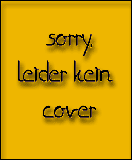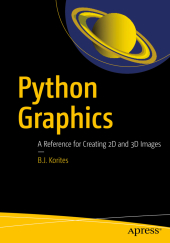 Neuerscheinungen 2018Stand: 2020-02-01 |
Schnellsuche
ISBN/Stichwort/Autor
|
Herderstraße 10
10625 Berlin
Tel.: 030 315 714 16
Fax 030 315 714 14
info@buchspektrum.de |

B. J. Korites
Python Graphics
A Reference for Creating 2D and 3D Images
1st ed. 2018. xiii, 363 S. 55 SW-Abb., 109 Farbabb. 254 mm
Verlag/Jahr: SPRINGER, BERLIN; APRESS 2018
ISBN: 1-484-23377-8 (1484233778)
Neue ISBN: 978-1-484-23377-1 (9781484233771)
Preis und Lieferzeit: Bitte klicken
Use Python´s built-in features to create innovative graphics for data visualization and technical illustrations. This book goes beyond simple commands and libraries to explain how to not only display but also rotate, shade, and edit graphics for any purpose.
Starting with the essential Python functions to set up a plotting space and produce 2 and 3-dimensional objects, you´ll learn how to construct more complex objects, translate and rotate them, remove hidden lines, introduce shading to add realism, and project images to visualize any dataset. The final chapter includes several worked applications in science and engineering including planetary models, which you can adapt for your own use.
Written for developers who want to harness Python´s capabilities to fine-tune their images, Python Graphics covers the different commands for plotting dots, lines, arrows, or arcs, creating custom plotting grids, correcting distortions, adding text and labels to illustrations, manipulating arcs and circles, specify and use colors, and more. Armed with these techniques and core math skills, you´ll be ready to create and customize detailed technical illustrations or data visualizations.
What You´ll Learn
Use Python´s built-in commands for plotting, removing distortions, and rotating objects
Create and edit 2D and 3D objects
Develop illustrations for scientific and engineering applications Who This Book Is For
Python developers looking for tips on how to create illustrations and visualizations, as well as scientists, engineers, or students using Python. It assumes familiarity with vectors, matrices, geometry and trigonometry.
Python Graphics
1) Essential Python Commands and Functions
2) Graphics in 2-Dimensions
3) Graphics in 3-Dimensions
4) Perspective
5) Intersections
6) Hidden Line Removal
7) Shading
8) 2D Data Plotting
9) 3D Data Plotting
10) Demonstrations
11) Appendix A: Where to Get Python
12) Appendix B: Planck´s Radiation Law and the Stefan-Boltzmann Equation
Dr. Bernard J. Korites has been involved in engineering and scientific applications of computers for his entire career. He has been an educator, consultant, and author of more than ten books on geometric modelling, computer graphics, artificial intelligence, simulation of physical processes, structural analysis and the application of computers in science and engineering.
He has been employed by Northrop Aviation, the Woods Hole Oceanographic Institute, Arthur D. Little, Itek and Worcester Polytech. He has consulted for Stone and Webster Engineering, Gould Inc, Wyman Gordon, CTI Cryogenics, the US Navy, Aberdeen Proving Grounds, and others. Early in his career he developed software to find physical interference between systems of solid objects and draw 3-dimensional and stereographic views. This found wide application in the design of power plants, submarines and other systems with densely packed spaces.


